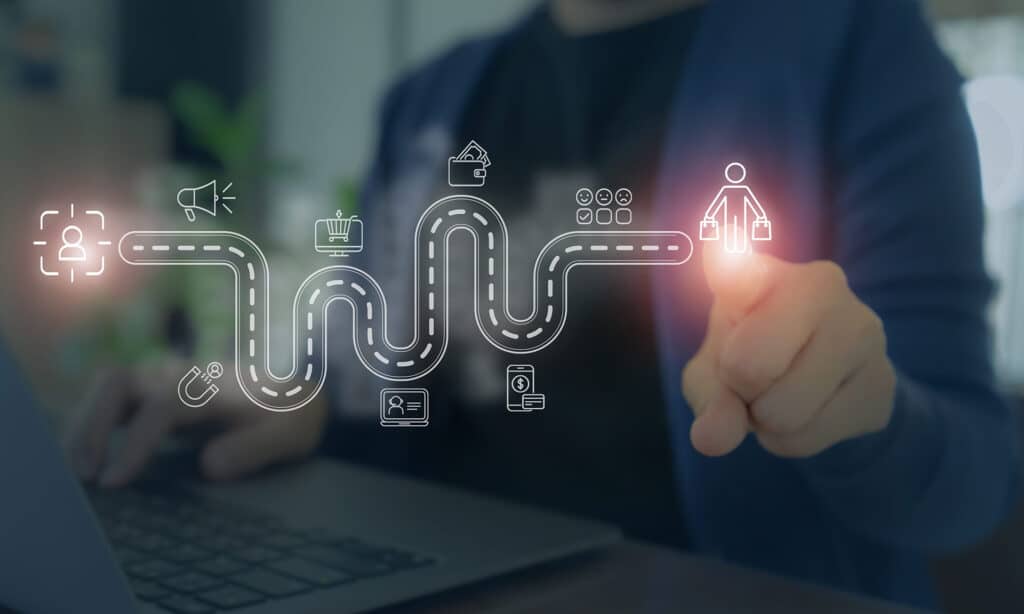What is the buyer journey?
The buyer journey describes the process that a customer goes through before making a purchase decision.
It consists of several phases in which the potential buyer collects various pieces of information and has different points of contact with a company or brand.
The buyer journey helps companies to specifically address the needs of their customers and guide them through the purchasing process with the right content and measures.
Phases of the buyer journey
Phase 1: Awareness – the awakening of the need
It all starts with a problem or a desire.
The customer realizes that they have a need – be it a broken cell phone, the desire for a new laptop or the search for an ideal gift.

In this phase, customers usually gather unspecific information:
- They read blog articles.
- They search for general information.
- They look at social media or forums.
It is crucial for companies to be present in this phase.
Through content marketing, SEO-optimized articles and appealing social media posts, they can attract the attention of potential customers.
Phase 2: Consideration – weighing up the options
The customer now has a rough idea of what they need.
Now the detailed research begins:
- He compares different providers.
- They read product ratings and test reports.
- They ask for recommendations and get opinions.
This is where companies can score points with convincing product information, authentic reviews and comparisons.
Retargeting ads and webinars are also effective ways of supporting customers in this phase.
Phase 3: Decision – The purchase decision
The moment of truth!
The customer has narrowed down his selection and is about to make a purchase.

Now factors such as:
- Price-performance ratio
- Availability and delivery time
- Customer service and additional services
Discount campaigns, free trial periods or excellent support can provide the decisive impetus here.
Companies should make the purchasing process as simple and pleasant as possible so as not to lose potential buyers in the final stages.
Tips for optimizing the buyer journey
To make the buyer journey more effective, companies should consider the following measures:
- Personalization: Tailor content and offers to different customer segments.
- Multi-channel approach: Address customers via different channels (website, social media, email).
- Optimized user experience: Simple, intuitive navigation and fast loading times on the website.

- Automation & retargeting: Target customers through email automation or targeted advertisements.
- Build trust: Provide customer reviews, seals of approval and transparent information.
Measuring the buyer journey
To measure the success of the buyer journey, companies should monitor the following key performance indicators (KPIs):
- Traffic sources: Where do visitors come from and via which channels?
- Conversion rate: How many interested parties become paying customers?
- Bounce rate: At what points do users bounce?
- Dwell time & engagement: How long do potential customers engage with the content?
- Customer feedback & surveys: Obtain direct feedback to identify optimization potential.
Conclusion: The art of accompanying the customer on their journey
The buyer journey is not a straight line, but a dynamic journey with many points of contact.
Companies that understand their potential customers and provide targeted support at every stage have a clear competitive advantage.
Whether through high-quality content, smart marketing strategies or excellent service – those who recognize and meet the needs of their customers turn prospects into enthusiastic buyers.
And that is the secret of long-term customer loyalty and sustainable success.




